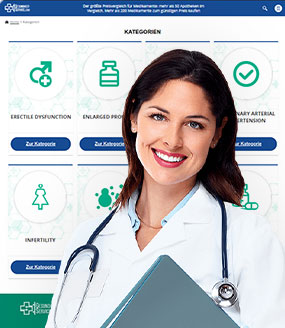With the active development of telecommunications technologies, a breakthrough is taking place in the medical and health spheres. The basic principles of telemedicine were established almost 100 years ago with the advent of broadcasting. Since the second half of the 20th century, there have been regular attempts to apply telecommunications technologies in the medical field: from remotely transmitting medical information and video images from clinics to remotely monitoring the health of astronauts and participants in Arctic expeditions. Recently, telemedicine has become particularly relevant thanks to the rapid development of innovative technologies.
What is telemedicine?
The definition is
“Telemedicine is a sub-area of telematics in health care and describes diagnostics and therapy by bridging a spatial or temporal (“asynchronous”) distance between doctor (teledoctor), therapist (teletherapist), pharmacist and patient or between two consulting doctors by means of telecommunication .” (Wikipedia).
Diagnostics, treatment, prescription of medication online, training, research and preventive measures are carried out within the framework of telecommunications.
Telemedicine aims to provide timely medical care to every person, regardless of location.
What are the benefits of telemedicine?
First, thanks to telemedicine, patients can get medical advice without leaving their home. Second, patients receive medical care in a comfortable home environment, which helps relieve the stress of visiting a doctor. And thirdly, it is possible to save money and time.
Telecommunications technologies help doctors keep track of the patient's condition after the operation, after the treatment or during the treatment of chronic diseases. Thanks to telemedicine, online consultations can also be carried out with colleagues and specialists from other medical fields.
Where is telemedicine used?
Due to the versatility of telecommunications technologies, telemedicine can be applied in various fields to ensure effective healthcare.
The most demanded segment is patient consultation in various fields: therapy, pediatrics, gynecology, etc. Veterinary consultation is also becoming popular. There are two main categories of telemedicine consultations:
- Online video consultation in real time. This is the most common option suitable for urgent emergencies. Conducting an online consultation requires the use of special technical equipment. This can enable high-quality data transmission remotely. It can be a laptop with an integrated microphone and camera, a tablet or a smartphone. The device should transmit sound and image well. During the online consultation there is direct communication between the patient and the doctor. As part of a phone call or in advance, the patient can send all the necessary materials to complete a diagnostic picture (e.g. copies of test results, x-rays, ultrasound pictures, medical records, etc.). In addition to private communication, they can organize real-time consultations. This allows the patient to simultaneously consult qualified specialists from different areas of healthcare. This saves the patient both time and money. Thanks to online consultation, anyone can consult a highly qualified doctor, even if they are thousands of kilometers away.
- Online consultation by email. The information is transmitted via various communication channels (e.g. email). With such an online consultation, the patient receives a competent initial assessment of their skin problem within 48 hours. This option is not suitable for urgent cases, but it is the simplest and most affordable.
Telemedicine services
Telemedicine is widely used in the US and various European countries. In the UK, the first projects in the field of telemedicine emerged in the early 1990s. New types of telecommunications are used, for example, for outpatient follow-up care for participants in clinical studies. According to statistics, the introduction of telemedicine in this field has helped reduce the number of hospitalizations, time spent in the clinic and mortality from cardiovascular diseases.
Various types of telemedicine (video consultation, telemonitoring, teletherapy, teleconciliation, teleconference) are currently permitted under the UK law. They are widely used in daily clinical practice, for example to transmit necessary medical information to share medical history, X-rays, computed tomograms, etc.
Thanks to telemedicine, it is possible to stay in constant contact with the treating doctor and to inform him about the health and the course of the disease.
Not long ago, video consultations were included health insurance. After the first face-to-face consultation, the patient was able to continue the treatment remotely. In May 2018, the e-health law was improved - now a personal consultation is no longer mandatory. According to the experts, this will help to optimize the care of patients with chronic diseases.
How does video consultation take place?
Many clinics offer remote consultations with leading specialists. In this case, doctors do not give advice by phone or e-mail.
At a preselected time, the video consultation takes place, where the doctor and the patient discuss the diagnosis, options for further treatment, etc. A prerequisite for conducting the video consultation is that the patient must be personally known to the doctor. The video consultation can last 20, 40 or 60 minutes.
Telemedicine during the Covid-19 pandemic
During the Covid-19 pandemic, the rapid response of medical professionals is crucial, especially when the number of infected people and areas of spread are increasing uncontrollably. In cases where rigid self-isolation is the only solution, telemedicine remains the only healthcare tool available. As the Covid-19 pandemic has shown, telemedicine systems with video consultations are an irreplaceable part of remote treatment.
From the category: Where, how and what drugs to buy?
Last updated on 25.05.2022







